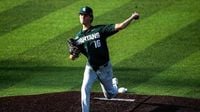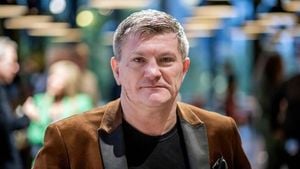The Baltimore Orioles have made a bold statement in the 2025 MLB Draft, assembling what many are calling the strongest haul of prospects in the entire draft class. With four of the top 37 picks and a record-setting bonus pool of $19,144,500, Baltimore's front office, led by Mike Elias, clearly aimed to inject fresh talent and depth into their farm system. The team's strategic selections have sparked intrigue, especially with their focus on catchers and an increased commitment to pitching prospects.
On the first day of the draft, the Orioles surprised many by using their first two picks on catchers. At No. 19, they selected Ike Irish from Auburn, an outfielder and catcher known for his all-around hitting ability. Then, with the 30th pick, they chose Caden Bodine from Coastal Carolina, widely regarded as the consensus top catcher in the draft. These selections raised eyebrows, particularly given the current struggles of Baltimore's starting catcher, Adley Rutschman, who is enduring a career-low batting average of .227 in the 2025 season.
Adding to the intrigue is Samuel Basallo, the Orioles' top-ranked prospect currently playing in Triple-A. Basallo, also a catcher, recently had an outstanding June, posting a .452 on-base percentage, a .318 batting average, and seven home runs. With Rutschman struggling and two highly touted catching prospects drafted, the Orioles' plans behind the plate are a hot topic among fans and analysts alike. Speculation abounds whether Irish and Bodine might eventually transition to other positions, a common practice in baseball development, or if the Orioles are preparing for a future without Rutschman.
Beyond the catching corps, the Orioles have shown a renewed focus on pitching talent. Historically, Baltimore under Mike Elias has been cautious about investing early draft capital in pitchers, often opting for position players or 'stuff guys' with raw potential. However, this year marked a shift. With the 58th pick, the Orioles selected Joseph Dzierwa, a 6-foot-8 left-handed pitcher from Michigan State, making him the highest-drafted pitcher in the Elias era. Dzierwa is known for his excellent command, walking just over two batters per nine innings last season. While his fastball velocity, sitting between 90 and 93 mph, is slightly below the Orioles' typical pitching prospects, his changeup has been graded highly, suggesting a promising arsenal if he can consistently hit 93-94 mph.
Following Dzierwa, Baltimore picked JT Quinn, a 6-foot-6 right-handed pitcher out of Georgia, at No. 69. Quinn has flashed a 98 mph fastball in limited starting opportunities and served as a swingman this year, showing considerable improvement compared to his earlier collegiate seasons. Both pitchers come with some question marks that caused them to fall out of the first round, but Baltimore's willingness to invest in them indicates a strategic push to bolster their pitching depth.
These draft choices underscore a broader trend within the Orioles organization. Over the past two seasons, Baltimore has selected four pitchers within the top 100 picks, signaling a shift towards balancing their farm system with both position players and arms. This approach contrasts with previous drafts where pitchers were often taken in later rounds, such as 14th-rounder Michael Forret and 8th-rounder Braxton Bragg, who have since shown promise.
Looking back, Baltimore's draft history boasts several legendary picks that have shaped the franchise's success. The 1978 draft stands out as the Orioles' best ever, featuring Hall of Famers Cal Ripken Jr. and Mike Boddicker. Other notable drafts include the 1967 selections of Don Baylor and Bobby Grich, the 1973 haul of Eddie Murray and Mike Flanagan, and the 1990 pick of Mike Mussina. More recently, the 2019 draft produced a promising core with Adley Rutschman, Gunnar Henderson, Kyle Stowers, and Joey Ortiz.
While it's too early to predict if the 2025 draftees will reach such heights, the current class looks exceptionally strong. Baltimore's ability to hold onto four top-37 picks longer than expected allowed them to secure a talented mix of players, including Auburn's Ike Irish, Coastal Carolina's Caden Bodine, Arkansas shortstop and Golden Spikes Award winner Wehiwa Aloy, and prep outfielder Slater de Brun, who draws comparisons to Corbin Carroll at a similar stage. They also drafted Michigan State's Joseph Dzierwa and UC Irvine's Colin Yeaman, a shortstop with offensive upside, further strengthening their prospect pool.
Among all teams, the Orioles tied with the Miami Marlins for the most Top 250 prospects on MLB Pipeline's list, with nine players selected. This impressive haul positions Baltimore as a team to watch in the coming years as these prospects develop and potentially make their mark in the majors.
Fans and analysts alike will be closely monitoring how Baltimore manages its catching depth, especially with the juxtaposition of Rutschman's struggles, Basallo's rise, and the fresh talent of Irish and Bodine. Meanwhile, the increased emphasis on pitching prospects like Dzierwa and Quinn could signal a more balanced and competitive Orioles roster in the near future.
As the 2025 season continues, the Orioles' draft strategy and player development approach will be critical to watch. With so much talent entering the system, Baltimore’s future looks full of potential, but the path forward remains a story still unfolding.




